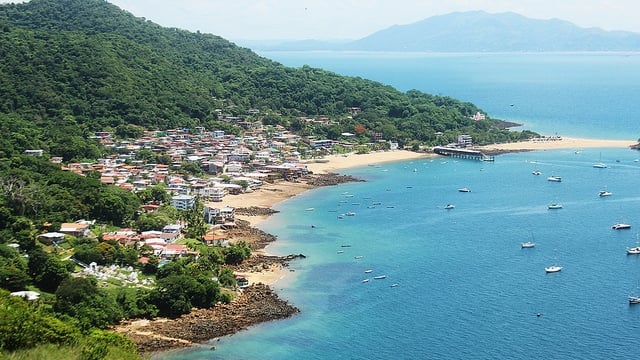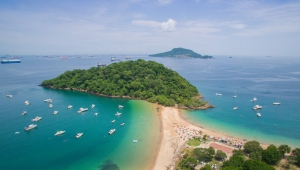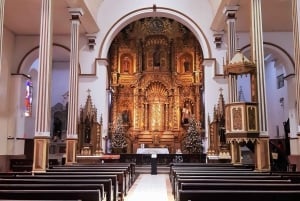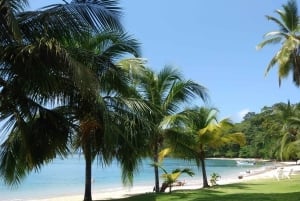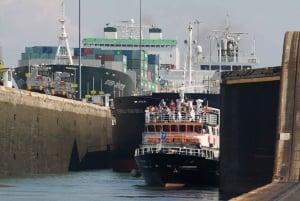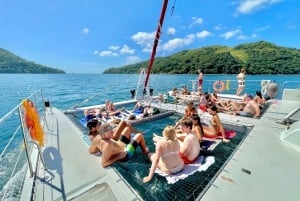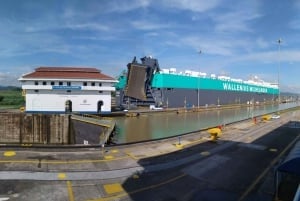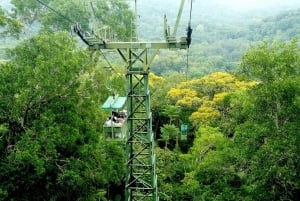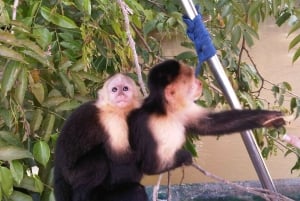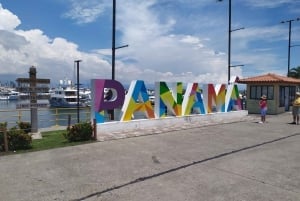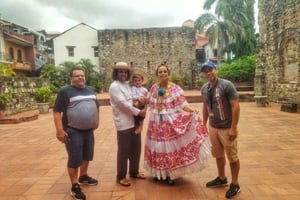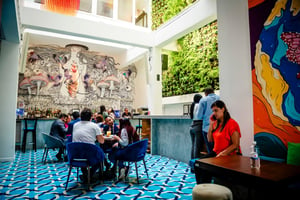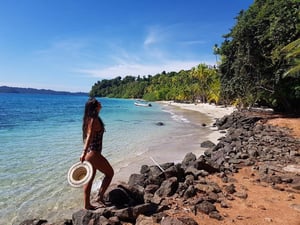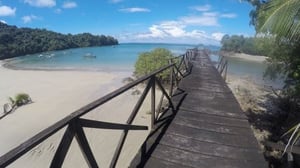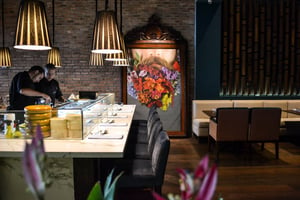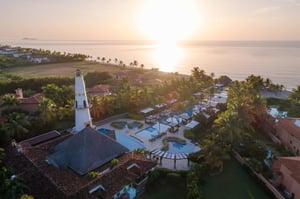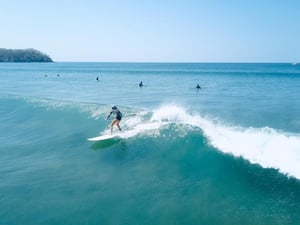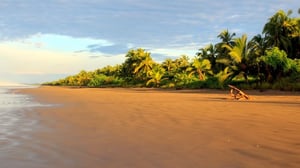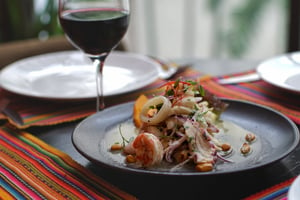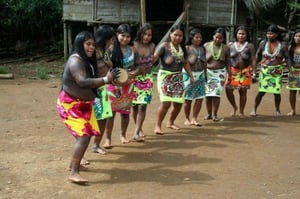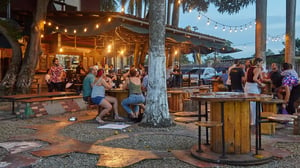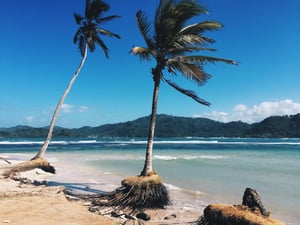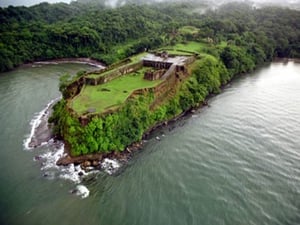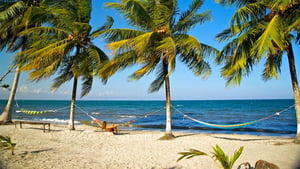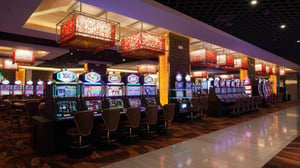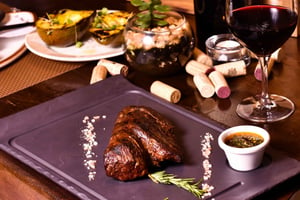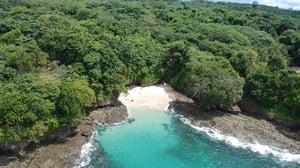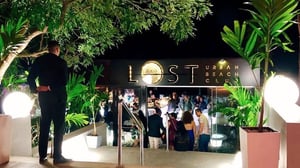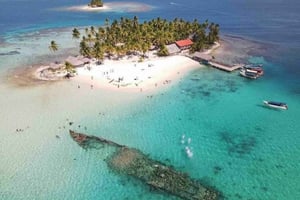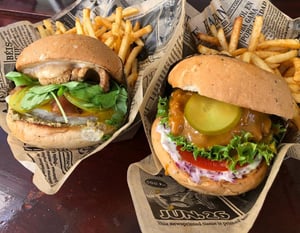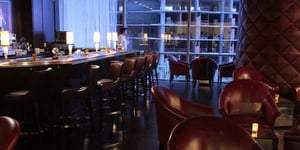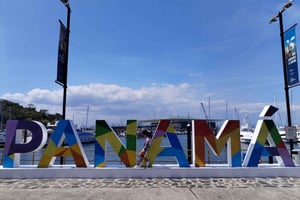Taboga, island of conquerors and pirates
Refugio de Francisco Pizarro, Henry Morgan or Paul Gauguin, the tiny Panamanian island is today a beach paradise half an hour by ferry from the capital
Book Top Experiences and Tours in Panama:
If youʻre booking your trip to Panama last minute, we have you covered. Below are some of the top tours and experiences!- Panama City: Half-Day City Tour Canal Entry & BioMuseo Park
- Panama City: Isla Grande Beach and Portobelo Private Tour
- From Panama City: El Valle de Anton Private Full-Day Tour
- Panama: Guided Northbound Panama Canal Cruise
- Panama: Taboga Island Catamaran Cruise with Lunch & Open Bar
The conquistadores Francisco Pizarro and Diego de Almagro converted it into their base of operations in the 1520s. From here they organized the first expeditions to explore the coast of what would later become known as South America on precarious wooden boats in which They fit 30 or 40 men.
The tourist that today visits the island, for which he only needs about 25 dollars -5 for the Uber that takes from the historic center of Panama to the island Perico, and 20 for the ferry that every hour makes the round trip until Taboga in about 30 minutes-, you can still approach the place where Pizarro slept the night before beginning the conquest of Peru, currently occupied by an ugly yellow brick house. Less than 300 meters away is the church of San Pedro, where the conquistadores prayed and communed before boarding.
The first house is located in Francisco Pizarro street and the church at the end of Diego de Almagro street, the two main axes of this island where there is no sign of black legend, something quite uncommon in a country like Panama, which, In spite of the excesses that they committed on the original conquering populations like Pedrarias Dávila or Gonzalo de Badajoz, it has as a national hero the discoverer in 1513 of the Pacific Ocean, Vasco Núñez de Balboa. He names the national currency, the port and the main avenue of the country's capital.
Precisely between Almagro and Pizarro streets there are half a dozen hotels that allow tourists to stay overnight in Taboga. You can choose between the luxury of Villa Caprichosa, decorated as if it were a Rococo palace in 18th-century France, which has suites with a private pool for 200 euros a night, even the most prosaic Mundi Hotel or Inn Cerrito Tropical, whose rooms hover 50 euros. In any of them the most important thing is to ensure a room overlooking the Bay of Taboga and remember the time when this island was a mandatory stop on the main route backbone of the Spanish empire.
Corsairs goal
Consolidated Spanish expansion in South America, this island became a necessary stopover for travelers who crossed the Atlantic from Seville. They disembarked in the Caribbean port of Portobelo and crossed the Isthmus of Panama on the road to Cruces, on horseback, on foot or by boat, until they reached Panama City, where canoes led them to the galleons that awaited them in Taboga to begin the final journey of the trip to Peru, the most powerful viceroyalty along with Mexico of the Spanish dominions in America.
Precisely, this prosperity turned Taboga into the target of the main pirates of the seventeenth and eighteenth centuries. The English Henry Morgan attacked the island after destroying Panama City in 1671, while Richard Hawkins or William Dampier took advantage of its springs to make aguada, while stalking the Spanish fleets. The last of these English sailors who assaulted her was Captain John Illingworth, who, in 1819, after losing his job in the British Royal Navy at the end of the Napoleonic wars, put himself at the service of the Spanish-American insurgents, for whose order he destroyed much of of its original buildings, although it had to withdraw due to the resistance of the population.
After the declaration of independence of Panama in 1821, this islet was one of the few Spanish redoubts in the hemisphere. In 1824, 300 years after the arrival of the first conquerors, the last soldiers who inhabited it had to cross the Pacific Ocean to the Philippines, aboard the frigate Santander, since throughout the American continent there was not a single port in the hands of the realistic army.
An illustrious guest
With the disappearance of the Spanish Empire, Taboga would not recover its splendor until the 1850s, during the gold rush in California, when it was visited by a few years later would be hero of the Civil War and eighteenth president of the United States, Ulysses S Grant. But above all it was from 1880, when the French engineer Ferdinand de Lesseps used it as a rest and recreation center for the workers of the Panama Canal, one of the greatest engineering works in history. This situation caused in the summer of 1886 the disappointment of one of his most illustrious guests, the painter Paul Gauguin, who hoped to reach a desert island in which to portray his virgin paradises alien to civilization and found it instead full of employees of the channel, of tourists and with prices through the clouds.
Today Taboga, also called Isla de las Flores for its exuberant tropical vegetation, is one of the favorite places of leisure for Panamanians, away from the hustle and bustle of the capital. On the beach of La Restinga, near the pier, it is possible to enjoy some meat skewers, a rice with seafood or a papaya juice while you admire the small bay where Spanish conquistadors and English pirates once traveled. Tourists who prefer physical exercise can walk the three-kilometer path up to Cerro de la Cruz, from whose peak you can see not only San Pedro and Taboga Bay, but also Panama City itself.


